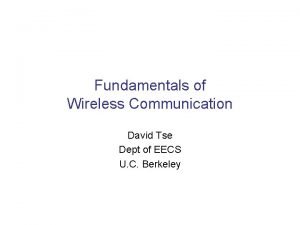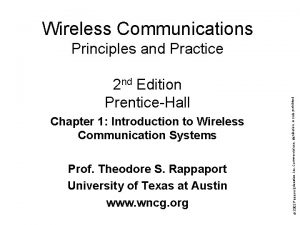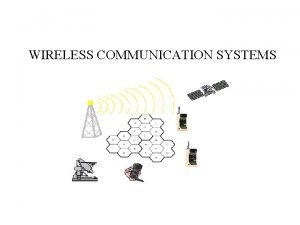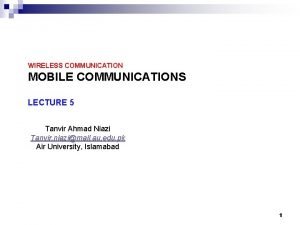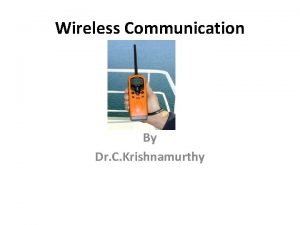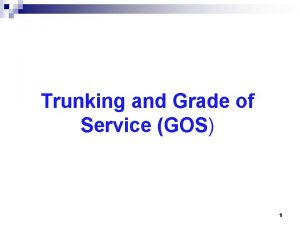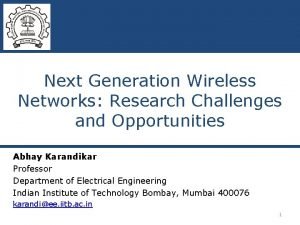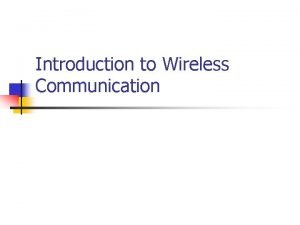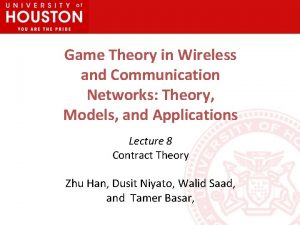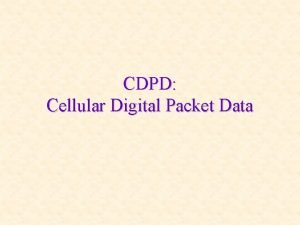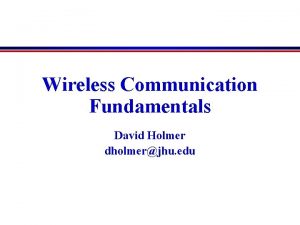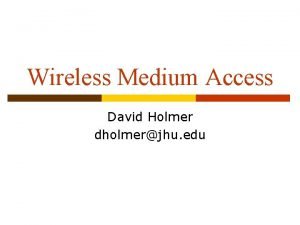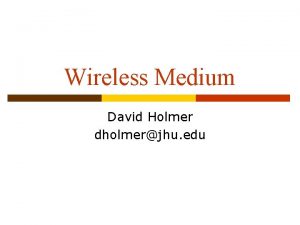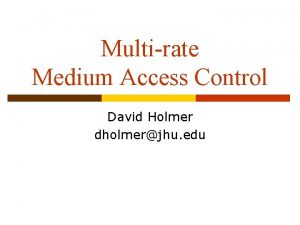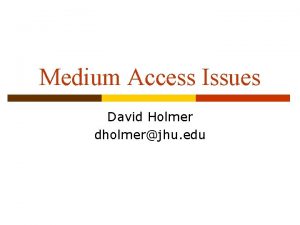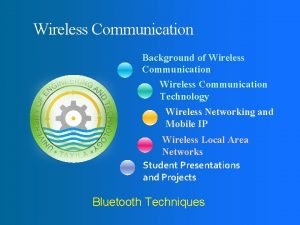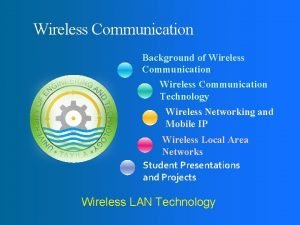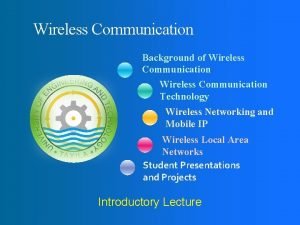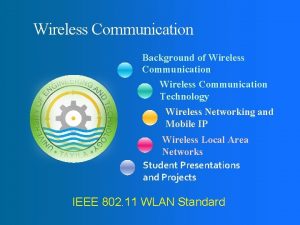Wireless Communication Fundamentals David Holmer dholmerjhu edu Physical











- Slides: 11

Wireless Communication Fundamentals David Holmer dholmer@jhu. edu

Physical Properties of Wireless l Makes wireless network different from wired networks l Should be taken into account by all layers

Wireless = Waves l Electromagnetic radiation l Emitted by sinusoidal current running through a wire l Creates propagating sinusoidal magnetic and electric l Fields induce current in receiving antenna

Wave Propagation Example electric field propagation direction magnetic field

Frequency & Public Use Bands l Propagating sinusoidal wave with some frequency/wavelength l C (speed of light) = 3 x 108 m/s Name 900 Mhz 2. 4 Ghz 5 Ghz Range 902 - 928 2. 4 - 2. 4835 5. 15 - 5. 35 Bandwidth 26 Mhz 83. 5 Mhz 200 Mhz Wavelength. 33 m / 13. 1”. 125 m / 4. 9”. 06 m / 2. 4”

Free-space Path-loss l Power of wireless transmission reduces with square of distance l Reduction also depends on wavelength l l Long wave length (low frequency) has less loss Short wave length (high frequency) has more loss

Other Path-loss Exponents l Path-Loss Exponent Depends on environment: Free space Urban area cellular Shadowed urban cell In building LOS Obstructed in building Obstructed in factories 2 2. 7 to 3. 5 3 to 5 1. 6 to 1. 8 4 to 6 2 to 3

Multi-path Propagation l Electromagnetic waves bounce off of conductive (metal) objects l Reflected waves received along with direct wave

Multi-Path Effect l Phase shift causes frequency dependent constructive / destructive interference Amplitude Multi-path components are delayed depending on path length (delay spread) Amplitude l Time Frequency

Modulation l Modulation allows the wave to carry information by adjusting its properties in a time varying way l l Amplitude Frequency Phase Digital modulation using discrete “steps” so that information can be recovered despite noise/interference l l l 8 VSB - US HDTV BFSK - Mote Sensor Networks QPSK - 2 Mbps 802. 11 & CMDA(IS-95)

Multi-transmitter Interference l Similar to multi-path l Two transmitting stations will constructively/destructively interfere with each other at the receiver l Receiver will “hear” the sum of the two signals, which usually means garbage
 Fundamentals of wireless communication
Fundamentals of wireless communication What are wireless devices and the wireless revolution
What are wireless devices and the wireless revolution Wireless communication introduction
Wireless communication introduction Page in wireless communication
Page in wireless communication Cell dragging in mobile communication
Cell dragging in mobile communication Advantages of wireless transmission
Advantages of wireless transmission Grade of service
Grade of service Next generation wireless communication market
Next generation wireless communication market Wireless communication history
Wireless communication history Game theory in wireless and communication networks
Game theory in wireless and communication networks Stanford wireless communication
Stanford wireless communication Cdpd in wireless communication
Cdpd in wireless communication
